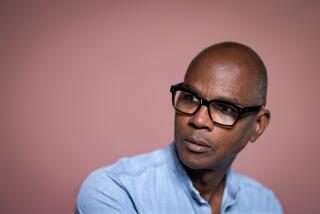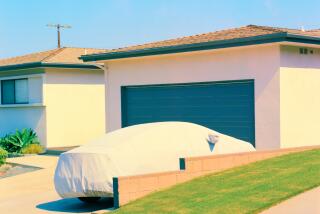LA CIENEGA AREA
- Share via
Grant Mudford is an Australian-born photographer who elicits geometrical formal structures from the apparent chaos of the modern urban environment. His early work consisted largely of overlapping street signs, tightly framed into de Stijl-like grids, as if the Pop, billboard brashness of James Rosenquist had invaded the pristine geometries of Piet Mondrian.
In his two current series, Mudford has fused the visual language of the street with more overtly architectural elements. In “Street Photographs” (1980-85), Mudford presents close-up, aerial perspectives of sidewalks and streets, using curbstones, gutters, paving cracks and road markings to divide the picture plane into a network of intersecting lines and texture fields. Human presence is merely implied or suggested, whether through discarded cigarette butts and gum wrappers, or an ominous footprint.
Similarly, in documenting the construction of Australia’s new Parliament House in Canberra (1985), Mudford focuses specifically on man’s innate ability to create geometry and symmetry from purely functional elements. Concrete piers and forms coalesce into two- and three-dimensional skeletal grids, while brightly lit banks of scaffolding create complex lattices, “poetically” dissected by a stray hose pipe or random pile of sand.
Mudford could be accused of arbitrarily imposing order to fit a preordained, and by now cliched, aesthetic, whether constructivist or modernist. Yet these are such artificially imposed structures, composed through selective framing and a keen eye for provocative juxtaposition, that Mudford’s photographic eye is much too mannered to be taken at face value. The work ends up critiquing itself through formal overkill, as if the camera’s viewfinder were at once its raison d’etre and own worst enemy. (Rosamund Felsen Gallery, 669 N. La Cienega Blvd., to March 15.)
More to Read
The biggest entertainment stories
Get our big stories about Hollywood, film, television, music, arts, culture and more right in your inbox as soon as they publish.
You may occasionally receive promotional content from the Los Angeles Times.










